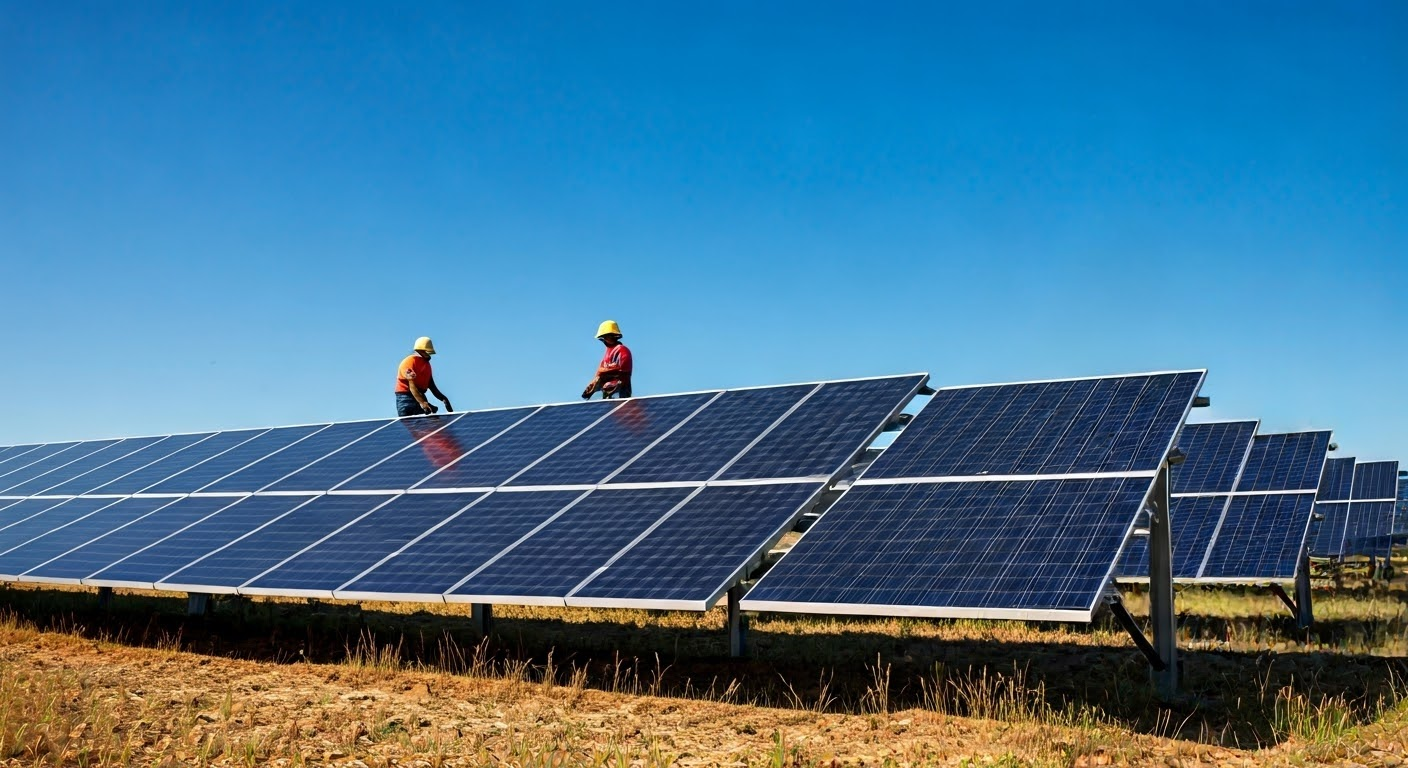
Key Highlights
- Developing regions show a promising trend toward adopting solar power, driven by the need for sustainable development and the increasing affordability of solar technology.
- Despite the potential of solar energy to address electricity access challenges, financial limitations and infrastructural constraints hinder widespread adoption in these regions.
- The Global South can learn from the successes and failures of solar adoption in developed countries, leveraging best practices and tailoring them to their unique contexts.
- International partnerships play a crucial role in fostering technology transfer, capacity building, and knowledge sharing to accelerate solar power implementation in emerging economies.
- Smart grids, advanced photovoltaics, and innovative financing models are among the future technologies and strategies that hold the potential to unlock the full benefits of solar power in the Global South.
Introduction

The Global South is at an important point in its quest for sustainable development. There are growing worries about climate change and a pressing need to provide energy to more people. In this context, adopting new technology is very important. Solar power stands out as a source of hope, especially in addressing various challenges related to energy access. It is clean, reliable, and getting cheaper, making it a great choice for meeting the energy needs in the Global South. This exploration looks at the potential, challenges, and benefits of solar power in creating a better future for these areas.
The Current Landscape of Solar Power in Developing Regions

The use of solar energy in developing areas shows both progress and challenges, including the demerits of solar technology. In recent years, there have been important improvements. These come from lower technology costs, helpful policies, and more awareness about the environment. However, the Global South still falls behind richer countries in installed solar power and how much it is used.
Some issues that prevent solar energy from being used widely are a lack of money, skills, and proper grid systems.
Overview of Solar Energy Utilization
Solar energy is a type of renewable energy that is changing how we produce electricity around the world. Photovoltaic (PV) technology turns sunlight directly into electricity. This technology has improved a lot, making it more efficient and cheaper.
Concentrating solar power (CSP) technologies use mirrors to gather sunlight for heat. These methods are very promising, especially in places with a lot of sun. When combined with good energy storage systems, they could change how we get electricity, especially in remote areas with no power grid.
Solar energy systems are also great for tough situations in developing regions. They can help where people are spread out and where there isn’t good access to a power grid.
Comparative Analysis with Developed Regions
The disparity in solar power adoption between developed and developing regions is starkly evident in global statistics. While countries like China, the United States, and Germany lead in installed solar PV capacity, nations in Africa, Asia, and Latin America are playing catch-up.
This gap is primarily attributed to disparities in economic development, access to financing, and technological capabilities. Nevertheless, developing regions exhibit immense potential for growth, particularly in residential electricity generation, as solar home systems offer a viable alternative to traditional grid connections.
| Region | Solar PV Capacity (GW) | Share of Global Total |
| Developed Regions | 540 | 60% |
| Developing Regions | 360 | 40% |
Industrial usage of solar power is also gaining traction in sectors such as agriculture, manufacturing, and tourism.
Challenges Hindering the Adoption of Solar Power
The road to using solar power widely in developing areas is not easy. We need to beat these challenges to make the most of this clean energy and secure a better energy future. To fix these issues, we need cooperation from governments, businesses, and local communities.
Many people do not know enough about solar technology. This lack of knowledge is a problem. It shows that we need good public education campaigns to help people understand solar power better.
Financial and Economic Barriers
Financial problems and financial constraints make it hard for countries to use solar power. Many people cannot find good ways to pay for solar energy systems. They face high upfront costs, which can stop them from investing in solar energy. Other needs, like clean water, food security, and healthcare, often get more attention than renewable energy.
Also, there isn’t enough skilled labor or good supply chains. This creates problems and raises costs. To fix these issues, we need new ways to finance solar projects. Options like micro-loans, pay-as-you-go plans, and partnerships between public and private sectors can help.
It is important to solve these financial and economic problems. This will help spread the use of solar power and increase its benefits for sustainable development.
Technical and Infrastructural Limitations
Technical problems and lack of infrastructure make it harder for solar power to be used. One issue is that solar energy is not constant. This means we need good energy storage systems to keep power capacity available. Many developing countries have weak grid systems. This makes it tough to connect large solar farms to current electricity networks.
Also, there is a lack of skilled workers to install, operate, and take care of solar energy systems. This can affect the long-term success of solar power. It is very important to invest in research and development, especially for energy storage and smart grids. This will help us solve these technical problems.
Fixing these technical and infrastructure issues is essential. It will help solar power grow and play an important role in energy security in developing areas.
Conclusion
In conclusion, using solar power in developing areas has huge potential for providing sustainable energy. However, money issues and technical limits make it hard to use widely. To overcome these problems, we need help from the government, global partnerships, and better technology. By solving these issues, we can unlock the full potential of solar power in these areas. It is important to look at successful examples and new technologies that can speed up the use of solar power. This will lead to a greener and more affordable energy future. Adopting solar power will not only help the environment but will also support long-term growth and success in developing regions.
Frequently Asked Questions
What are the primary benefits of adopting solar power in developing regions?
Solar power is an abundant resource in the Global South. It provides a way to support sustainable development by generating clean electricity. Having access to electricity can boost living standards, empower communities, and help the economy grow. It can also tackle water shortages by using solar-powered water pumps.
How can local governments support the transition to solar energy?
Local governments can help more people use solar energy by creating good policies. They can offer financial incentives like tax breaks and subsidies. Technical training programs are also important. Getting communities involved, making the permitting process easier, and supporting the creation of solar parks can speed up this change.
What role do international partnerships play in advancing solar power?
International aid can help share technology, support partnerships, and build skills through sharing knowledge. Working together globally is important to increase the use of renewable energy and make solar power available to everyone.
Are there successful case studies of solar power adoption in similar contexts?
Bangladesh’s solar home system program and Morocco’s big solar parks are great examples to follow. Looking at these case studies can help us learn important lessons. We can use this knowledge to set standards and copy good ideas in other projects.
What future technologies could accelerate solar power adoption?
- Better solar panels, improved battery storage, and smart grids can make things work better and be more reliable.
- New technologies, along with smart rules and ways to fund them, will be important for more people to use solar power.
Resources :

